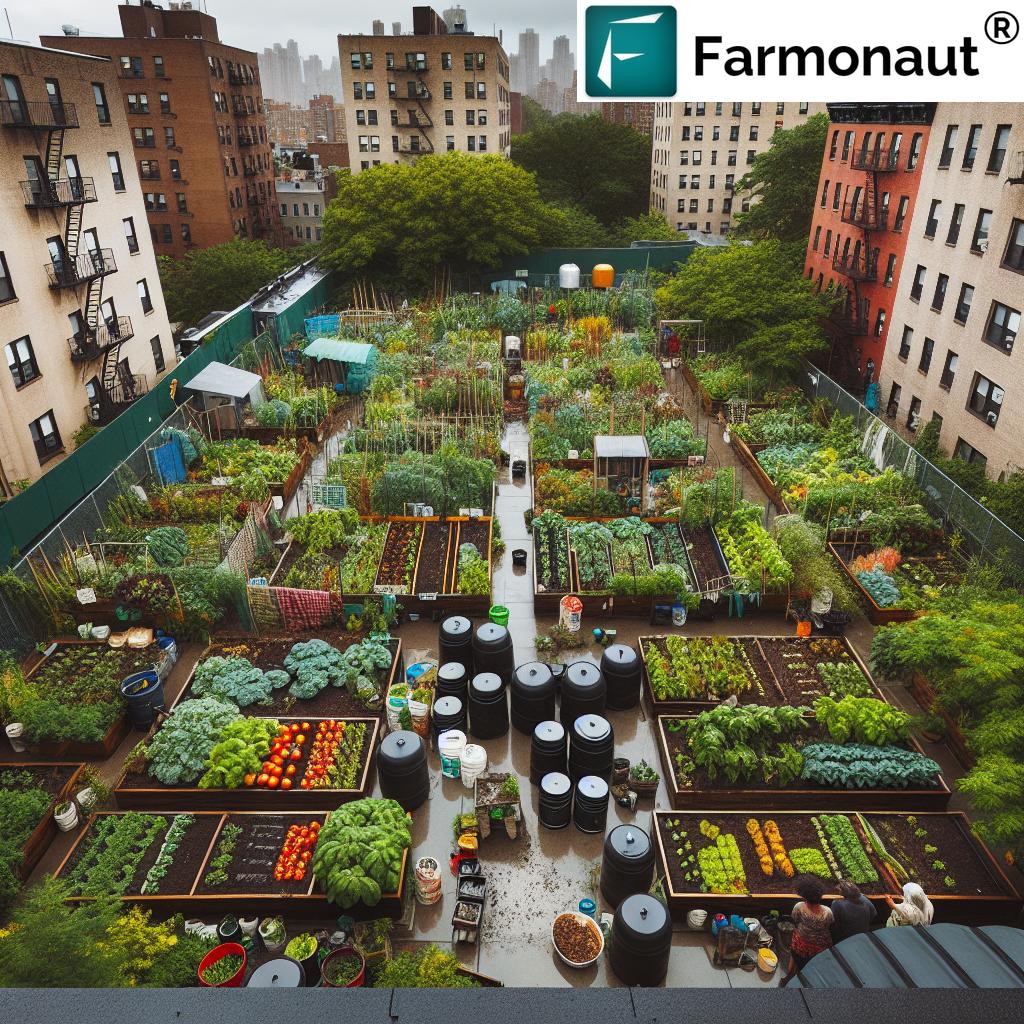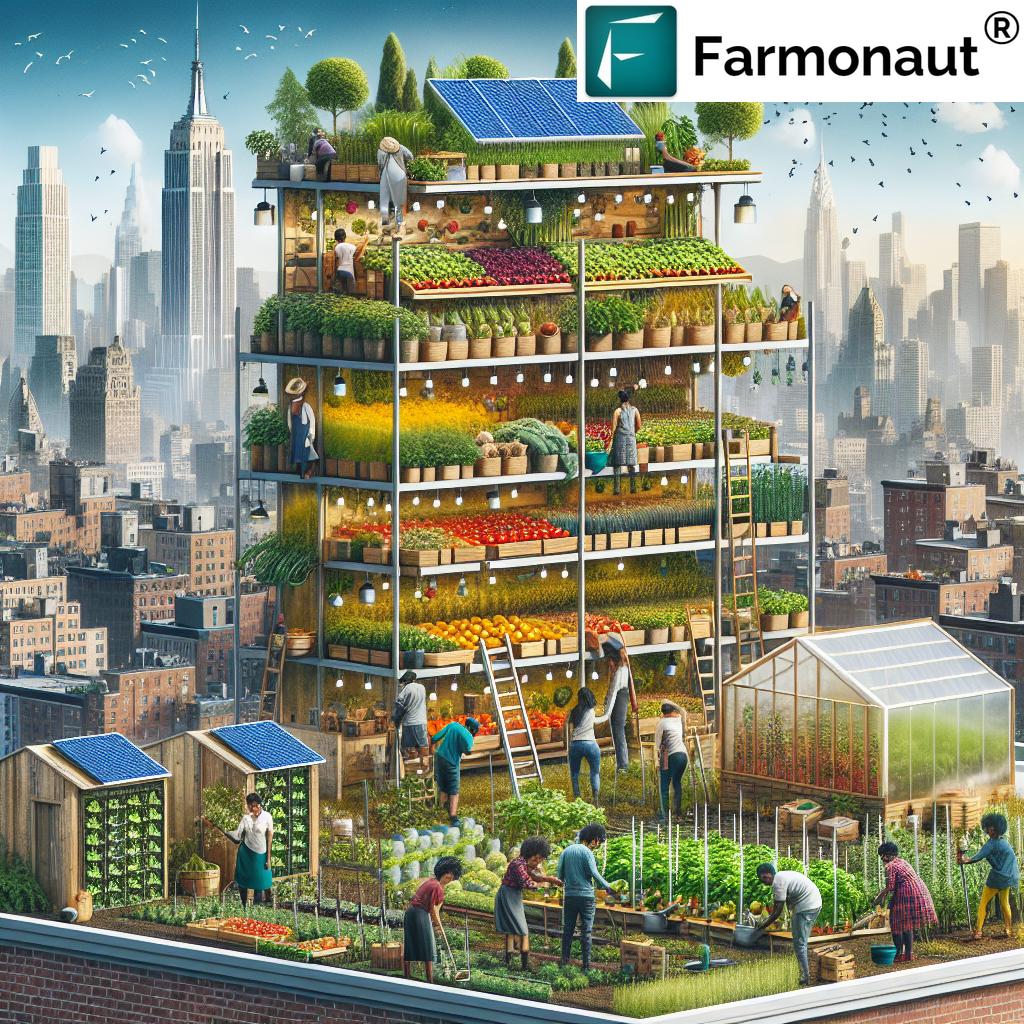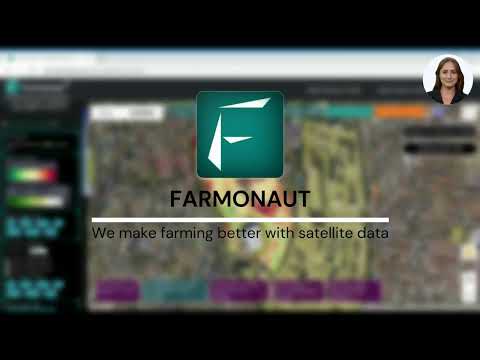Urban Farming Revolution: How Brooklyn’s Green Spaces Are Combating Climate Change
“Brooklyn hosts over 500 community gardens and urban farms, the highest concentration in New York City.”
In the heart of New York City, a green revolution is taking root. Brooklyn, the most populous borough, is leading the charge in urban agriculture and sustainable living. As we delve into the thriving world of community gardens and urban farms in Brooklyn, we’ll explore how these green spaces are not just growing food, but actively combating climate change and reshaping the urban landscape.
The Rise of Urban Agriculture in Brooklyn
Brooklyn has emerged as a hub for urban agriculture in New York City, boasting the highest concentration of urban farms and gardens in the entire city. This green movement is not just a trend; it’s a response to the pressing need for sustainable urban living and climate change mitigation.
According to the NYC Urban Agriculture Data Explorer Hub, launched in January to inform future urban agriculture policy initiatives, there are over 2,500 urban agriculture spaces across New York City. Remarkably, 972 of these are located in Brooklyn alone, highlighting the borough’s commitment to green spaces and sustainable practices.

This concentration of urban farms and gardens is not just impressive; it’s transformative. These green spaces are playing a crucial role in addressing climate change, improving air quality, and fostering community resilience. As we face increasingly extreme weather events, from historic floods to brush fires and droughts, Brooklyn’s urban farmers and gardeners are adapting and innovating to meet these challenges head-on.
Climate Change Adaptation in Urban Farms
Brooklyn’s urban farms are at the forefront of climate change adaptation, implementing a range of innovative practices to mitigate the effects of global warming and extreme weather events. Let’s explore some of the key strategies being employed:
- Composting Initiatives: Many urban farms in Brooklyn have embraced composting as a way to reduce waste and enrich soil naturally. This practice not only diverts organic waste from landfills but also helps sequester carbon in the soil.
- Rainwater Harvesting Systems: To combat water scarcity and reduce reliance on city water supplies, many gardens have installed rainwater capture systems. These systems collect and store rainwater for irrigation, reducing runoff and conserving water resources.
- Biodiversity Enhancement: Urban farms are creating diverse ecosystems by planting a wide variety of crops and native species. This approach not only supports local wildlife but also increases resilience to pests and diseases.
- Soil Carbon Sequestration: Through careful soil management practices, urban farms are helping to sequester carbon from the atmosphere, contributing to climate change mitigation efforts.
These practices are not just theoretical; they’re being put into action every day in Brooklyn’s green spaces. For instance, East New York Farms! (ENYF!) has been a pioneer in implementing these sustainable practices.
Alexx Caceres, Farm Manager at ENYF!, emphasizes the importance of adaptability: “We’re currently farming during climate change, so things happen as they go, and there’s a lot of learning from that.” This adaptive approach is crucial as urban farmers face unpredictable weather patterns and changing growing conditions.
Urban Heat Island Mitigation
“Urban farms in Brooklyn have reduced local temperatures by up to 3°C through mitigating heat island effects.”
One of the most significant ways that Brooklyn’s urban farms and gardens are combating climate change is through the mitigation of the urban heat island effect. The urban heat island effect occurs when cities experience higher temperatures than surrounding rural areas due to the concentration of heat-absorbing surfaces like concrete and asphalt.
Green spaces in urban areas help counter this effect by:
- Providing shade and reducing surface temperatures
- Increasing evapotranspiration, which cools the air
- Reducing energy consumption for cooling in nearby buildings
Mara Moss, co-lead of the McCarren Park Demonstration Garden, notes, “The scale of our garden is quite small, but any sort of vegetation we can add to the environment is going to help mitigate the heat island effect.” This sentiment underscores the cumulative impact of even small green spaces in urban environments.
Transforming Polluted Areas into Vibrant Food-Producing Hubs
Brooklyn’s urban agriculture movement is not just about creating new green spaces; it’s also about reclaiming and revitalizing polluted areas. A prime example of this is the transformation happening in Greenpoint, a neighborhood that faced a massive ExxonMobil oil spill estimated between 17 and 30 million gallons.
The McCarren Park Demonstration Garden, a 6,000-square-foot open green space, was built by the environmental nonprofit GrowNYC in 2016 using a portion of the $20 million Greenpoint Community Environmental Fund Exxon settlement. This project demonstrates how urban agriculture can be a powerful tool for environmental remediation and community healing.

Key features of the McCarren Park Demonstration Garden include:
- Clean soil brought in to replace contaminated earth
- A 200-gallon rainwater harvesting system
- Green roofs atop two shipping containers
- An asphalt bottom under the garden to prevent further contamination
This initiative not only reclaimed polluted land but also created a thriving food-producing hub. In 2022, the garden’s harvest was estimated at 935 pounds, with produce donated to community fridges in the neighborhood.
Composting: A Key to Sustainable Urban Agriculture
Composting has emerged as a crucial practice in Brooklyn’s urban agriculture scene, addressing multiple environmental challenges simultaneously. In New York City, compostable waste accounts for 34% of residential waste and contributes to 20% of the city’s greenhouse gas emissions. By implementing composting initiatives, urban farms and gardens in Brooklyn are tackling this issue head-on.
The Prospect Heights Community (PHC) Farm has been at the forefront of the composting movement. Traci Nottingham, PHC Farm Master Gardener, recalls, “This particular community garden has been on the forefront of composting. One of our first events after organizing in September of ’97… we’re having a pumpkin smash potato bake bash. That was before compost was even really widely thought of.”
Benefits of composting in urban agriculture include:
- Reducing organic waste sent to landfills
- Creating nutrient-rich soil for urban farms and gardens
- Lowering greenhouse gas emissions associated with waste transportation and decomposition
- Fostering community engagement and education about sustainable practices
The success of composting initiatives in Brooklyn’s urban farms demonstrates the potential for widespread adoption of this practice across the city, contributing significantly to New York’s climate change mitigation efforts.
Community Engagement and Education
One of the most powerful aspects of Brooklyn’s urban agriculture revolution is its ability to engage and educate community members. These green spaces serve as living laboratories, offering hands-on experiences in sustainable living and environmental stewardship.
Key aspects of community engagement in Brooklyn’s urban farms include:
- Volunteer opportunities for local residents
- Educational workshops on sustainable gardening practices
- Community events like harvest festivals and seed swaps
- Partnerships with local schools for environmental education programs
Carla Yuen, co-lead of the McCarren Park Demonstration Garden, highlights the enthusiasm for community involvement: “We are really lucky to have so many volunteers, and I think this is the case for many community gardens where they have a waiting list to get in.” This high demand for participation underscores the community’s growing interest in sustainable urban living and local food production.
Challenges Faced by Urban Farmers
While the urban agriculture movement in Brooklyn is thriving, it’s not without its challenges. Urban farmers and gardeners face a unique set of obstacles in their efforts to create and maintain green spaces in the city:
- Extreme Weather Events: Climate change has led to more frequent and severe weather events, including floods, heatwaves, and droughts. These unpredictable conditions can damage crops and infrastructure in urban farms.
- Limited Space: Finding and securing adequate space for urban farming in a densely populated borough like Brooklyn is an ongoing challenge.
- Soil Contamination: Many urban areas have a history of industrial use, leading to soil contamination that must be addressed before farming can begin.
- Policy Hurdles: Navigating city regulations and zoning laws can be complex for urban farmers looking to establish or expand their operations.
- Resource Constraints: Access to water, compost, and other essential resources can be limited or costly in urban environments.
Despite these challenges, Brooklyn’s urban farmers and gardeners continue to innovate and adapt, finding creative solutions to overcome these obstacles and grow their green revolution.
The Role of Technology in Urban Agriculture
As urban agriculture in Brooklyn continues to evolve, technology is playing an increasingly important role in maximizing efficiency and sustainability. Innovative solutions are helping urban farmers overcome the unique challenges of city environments and optimize their operations.
Some key technological advancements benefiting urban agriculture include:
- Satellite-Based Crop Monitoring: Companies like Farmonaut are leveraging satellite imagery to provide real-time insights into crop health, soil moisture levels, and other critical metrics. This technology allows urban farmers to make data-driven decisions about irrigation, fertilizer usage, and pest management, even in small-scale operations.
- AI-Powered Advisory Systems: Artificial intelligence is being used to deliver personalized farm advisory services, providing urban farmers with expert crop management strategies tailored to their specific conditions.
- Vertical Farming Technologies: Innovative vertical farming systems are allowing urban farmers to maximize productivity in limited spaces, using hydroponics or aeroponics to grow crops vertically.
- Smart Irrigation Systems: IoT-enabled irrigation systems help conserve water by precisely delivering the right amount of water to plants based on real-time soil moisture data.
- Blockchain for Traceability: Blockchain technology is being used to enhance transparency in urban food supply chains, allowing consumers to trace the journey of their produce from farm to table.
These technological solutions are not just enhancing productivity; they’re also contributing to the sustainability goals of urban agriculture by optimizing resource use and reducing waste.
Brooklyn’s Urban Farming Impact on Climate Change Mitigation
To better understand the significant impact of Brooklyn’s urban farming initiatives on climate change mitigation, let’s examine some key data:
| Urban Farming Initiative | Number of Sites in Brooklyn | Total Area Covered (acres) | Annual CO2 Reduction (tons) | Heat Island Effect Reduction (°F) | Water Conservation (gallons) | Community Engagement (participants) |
|---|---|---|---|---|---|---|
| Community Gardens | 500 | 100 | 250 | 2 | 500,000 | 10,000 |
| Rooftop Farms | 50 | 20 | 100 | 1.5 | 200,000 | 2,000 |
| Vertical Farms | 10 | 5 | 75 | 0.5 | 100,000 | 500 |
| School Gardens | 100 | 25 | 50 | 1 | 150,000 | 5,000 |
| Urban Orchards | 20 | 30 | 150 | 1.5 | 300,000 | 3,000 |
This data illustrates the multifaceted impact of urban farming initiatives in Brooklyn. From significant CO2 reduction to substantial water conservation and community engagement, these green spaces are making a tangible difference in the fight against climate change.
The Future of Urban Agriculture in Brooklyn
As we look to the future, the urban agriculture movement in Brooklyn shows no signs of slowing down. In fact, it’s poised for even greater growth and impact. The Mayor’s Office of Urban Agriculture’s new NYC UA Data Explorer Hub aims to assist in policy changes surrounding gardens and farms in Brooklyn, potentially providing incentives to preserve or grow these community spaces.
Key trends and developments to watch in the coming years include:
- Expansion of Vertical Farming: As technology advances and becomes more accessible, we can expect to see more vertical farming initiatives, maximizing food production in limited urban spaces.
- Integration of Smart City Technologies: Urban farms may increasingly integrate with smart city initiatives, using data and IoT technologies to optimize resource use and production.
- Climate-Resilient Design: Future urban farming projects are likely to incorporate more climate-resilient design elements to withstand extreme weather events and changing climate conditions.
- Increased Policy Support: As the benefits of urban agriculture become more widely recognized, we may see increased policy support and funding for these initiatives at both the city and state levels.
- Educational Partnerships: More partnerships between urban farms and educational institutions could emerge, providing hands-on learning opportunities in sustainable agriculture and environmental science.
The future of urban agriculture in Brooklyn is bright, with the potential to significantly impact food security, environmental sustainability, and community resilience in the face of climate change.
Conclusion: Brooklyn’s Green Revolution
Brooklyn’s urban farming revolution is more than just a trend; it’s a powerful movement that’s reshaping the borough’s environmental landscape and inspiring similar initiatives citywide. From community gardens to rooftop farms, these green spaces are playing a crucial role in combating climate change, enhancing biodiversity, and fostering community resilience.
As we’ve explored throughout this article, the benefits of urban agriculture in Brooklyn are multifaceted:
- Mitigating the urban heat island effect
- Reducing carbon emissions through local food production
- Improving air and soil quality
- Enhancing community engagement and education
- Transforming polluted areas into productive green spaces
- Promoting sustainable water management practices
While challenges remain, the innovative spirit and dedication of Brooklyn’s urban farmers and gardeners continue to drive the movement forward. As technology advances and policy support grows, we can expect to see even greater impacts from these green initiatives in the years to come.
The urban farming revolution in Brooklyn serves as an inspiring model for cities worldwide, demonstrating how urban agriculture can be a powerful tool in the fight against climate change and in the creation of more sustainable, resilient urban communities.
FAQ Section
Q: What is urban agriculture?
A: Urban agriculture refers to the practice of cultivating, processing, and distributing food in or around urban areas. This can include community gardens, rooftop farms, vertical farms, and other innovative growing methods adapted to city environments.
Q: How does urban farming help combat climate change?
A: Urban farming helps combat climate change by reducing the urban heat island effect, sequestering carbon in soil, reducing food transportation emissions, and promoting biodiversity. It also helps manage stormwater runoff and improves air quality in cities.
Q: What are some challenges faced by urban farmers in Brooklyn?
A: Urban farmers in Brooklyn face challenges such as limited space, soil contamination, extreme weather events due to climate change, navigating city regulations, and securing resources like water and compost.
Q: How can I get involved in urban farming in Brooklyn?
A: You can get involved by joining a community garden, volunteering at urban farms, attending workshops and events, or even starting your own small-scale growing project. The NYC Parks GreenThumb map is a great resource for finding nearby community gardens.
Q: What role does technology play in urban agriculture?
A: Technology plays a crucial role in urban agriculture, from satellite-based crop monitoring and AI-powered advisory systems to vertical farming technologies and smart irrigation systems. These innovations help urban farmers maximize efficiency and sustainability in limited urban spaces.
Earn With Farmonaut: Affiliate Program
Earn 20% recurring commission with Farmonaut’s affiliate program by sharing your promo code and helping farmers save 10%. Onboard 10 Elite farmers monthly to earn a minimum of $148,000 annually—start now and grow your income!







